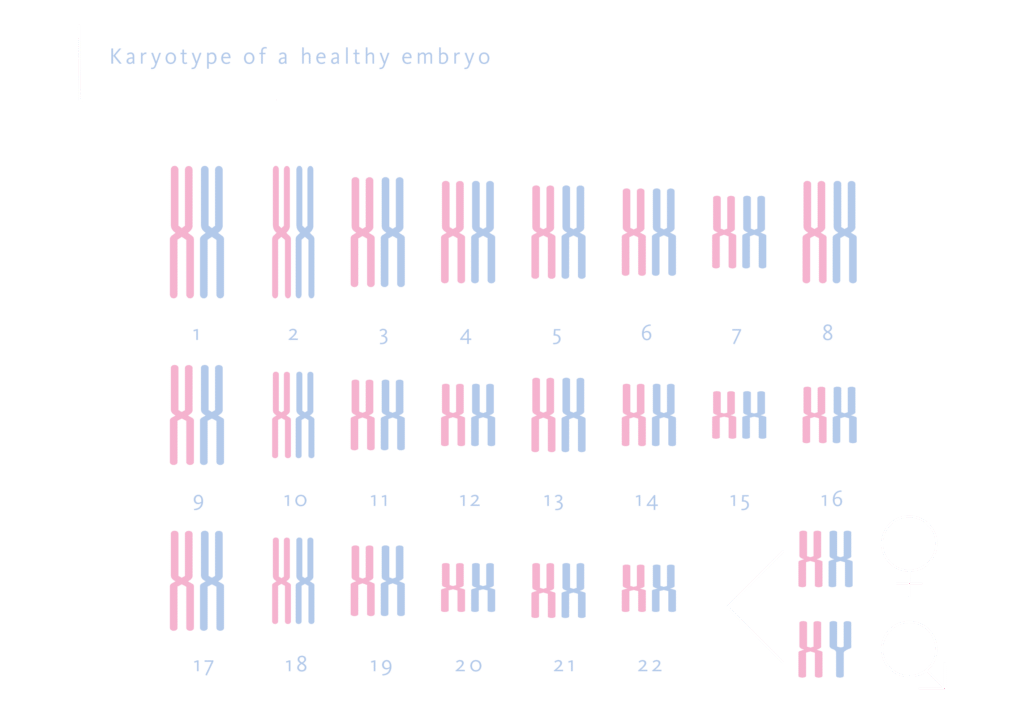In assisted reproduction centres, embryos are usually transferred, biopsied or cryopreserved at day 5 or 6 of development. Optimal blastocysts are fully expanded or hatching and exhibit a prominent inner cell mass and a cohesive trophectoderm after 116 hours of culture from oocyte insemination, i.e. by day 5 of embryo development. Those embryos that have not reached that stage of development on that day are re-evaluated on day 6 (138 h) to determine their suitability. Thus, embryos that achieve optimal development on day 6 are transferred, biopsied or cryopreserved, while those that have not, are discarded, as embryonic development beyond day 6 of culture is generally indicative of a poor prognosis for implantation. The slower development of these blastocysts begins to become evident from the time of the pronuclear fading, with differences in development times and intervals progressively increasing until blastocyst expansion.
Approximately 5% of fertilised oocytes reach the optimal blastocyst stage by day 7 (160 hours), and in 3% of cases, patients exclusively have day 7 embryos, representing their only chance of achieving gestation. This underscores the importance of recent studies aimed at determining whether these embryos can be used with reasonable reproductive success.

How is the ploidy of day 7 embryos?
An important consideration to address before utilizing these embryos is their chromosomal status. Historically, we knew that embryos biopsied on day 6 exhibited a higher incidence of aneuploidy compared to those biopsied on day 5. However, there was a lack of information regarding embryos biopsied on day 7, as it was not a common practice to biopsy them. Until relatively recently, there had been no published studies on the chromosomal makeup of 7-day blastocysts. The pioneering study by Su et al. examined the ploidy status of 151 of these embryos, revealing that 37% of them were euploid. As expected, this rate of euploidy was influenced by maternal age, with 92% of day 7 embryos from patients over 40 years old being aneuploid.

In a subsequent study, Lane et al. reported similar findings: 42% of day 7 embryos were euploid, compared to 63% of day 5 embryos and 54% of day 6 embryos. The proportion of euploid embryos increased with the extent of trophectoderm expansion. Additionally, the rate of mosaicism was consistent across all three groups, at approximately 3%.

Implantation capacity of day 7 embryos
It remains to be elucidated whether embryos that reach optimal degree of development and morphology at day 7 are capable of implanting at reasonable rates, justifying their transfer to patients to achieve gestation. Thus, in the various studies in which the implantation capacity of these blastocysts has been analysed, it has been noted that they exhibit a lower implantation potential compared to those from day 5 and day 6, even when maternal age was considered.
In the study by Lane et al, the live birth rates of embryos transferred on day 5, 6 and 7 were 69%, 55% and 36%, respectively. Liu et al. analysed 5945 cryotransfers of day 5, 4094 day 6 and 137 day 7 embryos, the gestation rates were 63, 51 and 14% respectively. Conversely, the percentage of miscarriage was significantly higher at day 7 (47%) compared to the other two groups (18% and 21%). In contrast, other studies have reported no significant differences in pregnancy loss rates between the groups. When day 7 blastocysts had undergone PGT-A, the clinical pregnancy rate increased to 42%, and the miscarriage rate significantly decreased.

Does day 7 embryo transfer pose any obstetric or perinatal risk?
In a recent study, the obstetric and perinatal outcomes of embryos vitrified at day 7 of development were compared with those at day 3, 5 and 6. Firstly, it was determined that pregnancies lasted a similar duration across all groups, with the weeks of gestation being consistent. Regarding the babies’ weight, it was found that transferring day 7 blastocysts was associated with an increased risk of high birth weight for gestational age (VLGA, >97th percentile) compared to day 3 embryos. However, all blastocysts exhibited similar outcomes regardless of the day of development from which they originated.
Conclusions
Day 7 blastocysts are relatively rare, constituting only 5% of fertilized oocytes that reach this developmental stage. Among these, approximately 60% are expected to be aneuploid, with this percentage likely rising with the age of the patient. Upon transfer, their implantation rate is estimated to be around 30%, which is lower than that of day 5 and 6 embryos. While data on day 7 blastocysts are limited, they indicate that perinatal outcomes are comparable to those of day 5 and 6 blastocysts.
In light of these findings, patients should be informed that slow-developing embryos are candidates for transfer if day 5 or 6 blastocysts are not available, as they may result in pregnancy and the birth of healthy children, although to a lesser extent than those that reach the blastocyst stage on day 5 or 6. In addition, they should be advised to undergo PGT-A to ensure the transfer of euploid embryos, thereby potentially improving the chances of successful implantation and reducing the risk of miscarriage.
References
- Alpha Scientists in Reproductive Medicine and ESHRE Special Interest Group of Embryology. The Istanbul consensus workshop on embryo assessment: proceedings of an expert meeting. Hum Reprod. 2011;26(6):1270-1283. doi:10.1093/humrep/der037
- Coticchio G, Ezoe K, Lagalla C, Zacà C, Borini A, Kato K. The destinies of human embryos reaching blastocyst stage between Day 4 and Day 7 diverge as early as fertilization. Hum Reprod. 2023;38(9):1690-1699. doi:10.1093/humrep/dead136
- Huang J, Yang X, Wu J, Kuang Y, Wang Y. Impact of Day 7 Blastocyst Transfer on Obstetric and Perinatal Outcome of Singletons Born After Vitrified-Warmed Embryo Transfer. Front Physiol. 2020;11:74. Published 2020 Feb 12. doi:10.3389/fphys.2020.00074
- Lane SL, Reed L, Schoolcraft WB, Katz-Jaffe MG. Euploid day 7 blastocysts of infertility patients with only slow embryo development have reduced implantation potential. Reprod Biomed Online. 2022;44(5):858-865. doi:10.1016/j.rbmo.2021.08.027
- Liu X, Lou H, Zhang J, et al. Clinical outcome analysis of frozen-thawed embryo transfer on Day 7. Front Endocrinol (Lausanne). 2022;13:1082597. Published 2022 Dec 9. doi:10.3389/fendo.2022.1082597
- Su Y, Li JJ, Wang C, Haddad G, Wang WH. Aneuploidy analysis in day 7 human blastocysts produced by in vitro fertilization. Reprod Biol Endocrinol. 2016;14:20. Published 2016 Apr 14. doi:10.1186/s12958-016-0157-x
